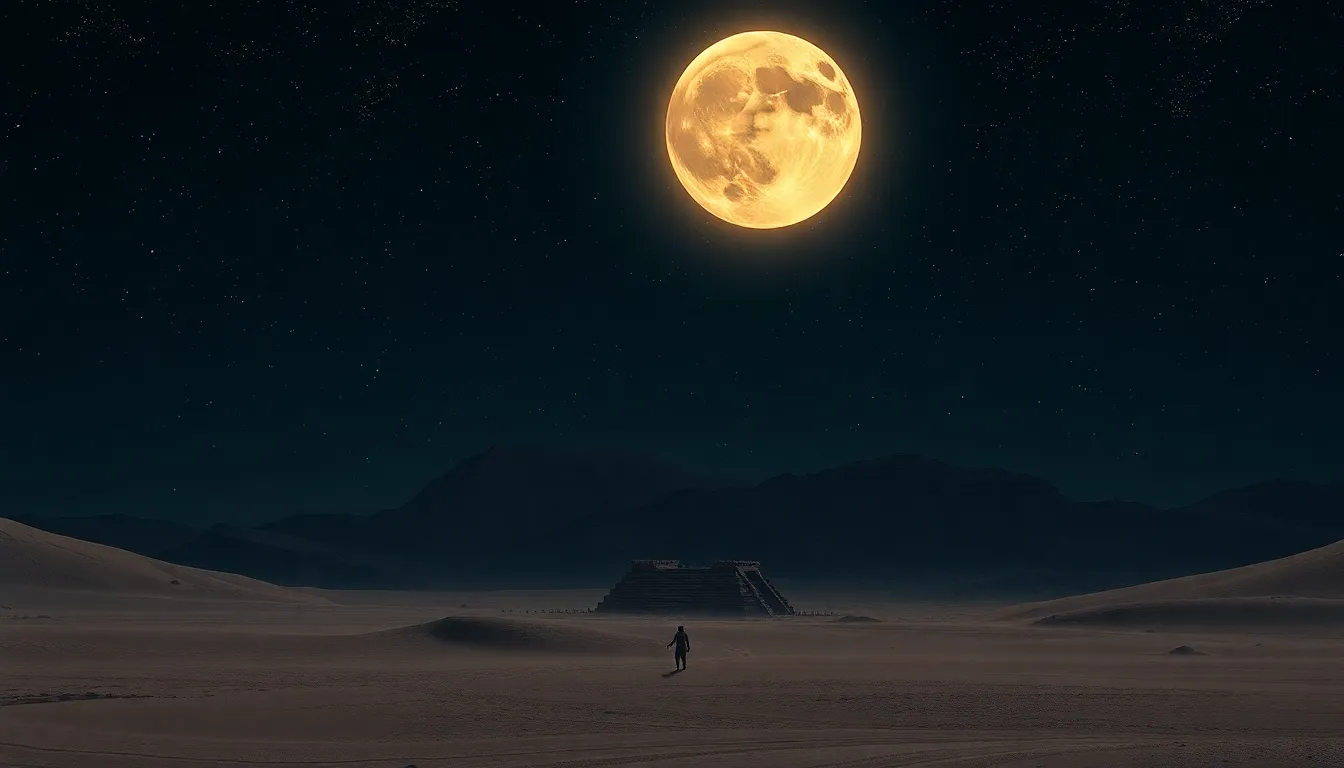The Moon and the Stars: Egyptian Astronomy and Mythology
I. Introduction
Ancient Egyptian astronomy is a fascinating field that intertwines the study of celestial bodies with rich mythological narratives. The Egyptians had a profound understanding of the cosmos, which played a significant role in their daily lives, religion, and culture. The stars, planets, and especially the moon were not just celestial phenomena; they were deeply connected to their mythology, influencing their beliefs and practices.
This article aims to explore the historical context of Egyptian astronomy, the significance of the moon and stars in their mythology, and the enduring legacy of these celestial observations in ancient Egyptian society.
II. Historical Context of Egyptian Astronomy
The astronomical practices of ancient Egypt can be traced back to the earliest dynasties. Over millennia, the Egyptians developed a sophisticated understanding of the cosmos.
- Timeline of Astronomical Practices:
- c. 3000 BCE: The creation of the earliest calendars based on lunar cycles.
- c. 2500 BCE: Pyramid construction aligned with celestial bodies.
- c. 1500 BCE: The establishment of star catalogs by priests.
- Key Figures: Notable astronomers and priests, such as Imhotep and Thales, made contributions to Egyptian astronomy.
- Role in Society: Astronomy was integral to agriculture, timekeeping, and religious practices, helping to organize the agricultural calendar based on the flooding of the Nile.
III. The Moon in Egyptian Mythology
The moon held a special place in Egyptian mythology and culture, often associated with various deities and symbolic meanings.
- Lunar Deities:
- Khonsu: The god of the moon, often depicted as a young man with a sidelock of youth and a lunar disk on his head.
- Thoth: The god of wisdom, writing, and magic, who was also associated with the moon and considered a mediator between gods and humanity.
- Symbolism: The moon symbolized the passage of time and was linked to the cycles of life, death, and rebirth.
- Myths: Various myths explain the moon’s phases, including tales of Khonsu’s journey across the night sky and the battle between Thoth and the serpent Apophis.
IV. The Stars and Constellations
The ancient Egyptians were keen observers of the night sky, identifying several constellations that guided their activities.
- Key Constellations:
- The Orion constellation, associated with Osiris, the god of the afterlife.
- The Big Dipper, known as the “Great Bear,” was used for navigation and timekeeping.
- Nile River’s Importance: The Nile served as a reference point for mapping the stars, with its banks aligning with certain constellations.
- Role in Navigation and Agriculture: The stars helped guide sailors and were crucial for determining the timing of agricultural activities.
V. The Relationship Between Astronomy and Religion
The intertwining of astronomy and religion in ancient Egypt is evident in many aspects of their culture.
- Celestial Bodies as Deities: Many stars and planets were considered manifestations of gods and goddesses, reinforcing their divine authority.
- Temple Architecture: Many temples were aligned with celestial events, such as solstices and equinoxes, showcasing the Egyptians’ astronomical knowledge.
- Festivals and Rituals: Numerous festivals celebrated lunar and stellar events, marking significant agricultural and religious times.
VI. The Concept of Time and the Calendar
The ancient Egyptians developed a complex calendar system based on both lunar and solar cycles.
- Calendar System: The Egyptian calendar consisted of 12 months, each with 30 days, plus an additional five days to align it with the solar year.
- Lunar Cycles: The phases of the moon were crucial for timekeeping, influencing the scheduling of festivals and agricultural activities.
- Seasonal Festivals: Many festivals, such as the Opet Festival, were linked to celestial events and the annual flooding of the Nile.
VII. Legacy of Egyptian Astronomy
The astronomical knowledge of ancient Egypt left a lasting legacy that influenced later cultures and continues to be studied today.
- Influence on Later Cultures: Greek scholars, such as Ptolemy, were influenced by Egyptian astronomy, integrating it into their own systems.
- Preservation of Knowledge: Many texts and artifacts have preserved Egyptian astronomical knowledge, providing insights into their sophisticated understanding of the cosmos.
- Modern Interpretations: Today, archaeologists and astronomers continue to study ancient Egyptian sites for clues about their astronomical practices and beliefs.
VIII. Conclusion
In summary, the study of Egyptian astronomy reveals a complex interplay between celestial observations and mythology. The Egyptians’ understanding of the moon and stars not only guided their agricultural practices but also influenced their religious beliefs and cultural rituals.
The enduring impact of Egyptian astronomy is evident in its influence on later civilizations and in the ongoing fascination with their rich mythology. As we continue to explore the cosmos, the insights of ancient Egyptian astronomers provide a valuable perspective on humanity’s quest to understand the universe.
We invite you to delve deeper into the wonders of Egyptian astronomy and mythology, uncovering the celestial connections that shaped one of history’s most remarkable civilizations.




